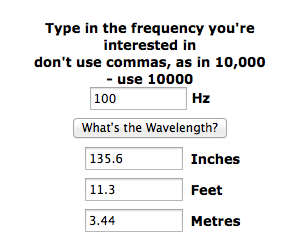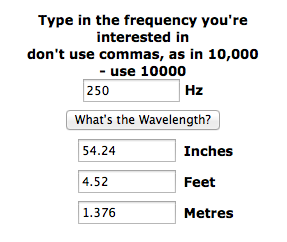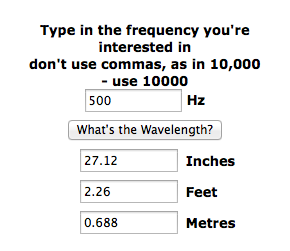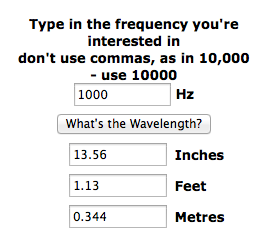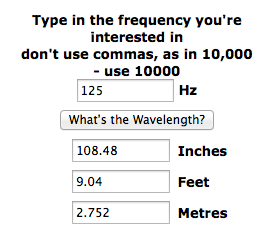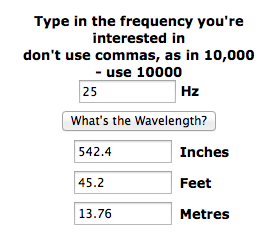I’ve been looking into the concept that a line array needs to be approximately 12 feet long for directional control down to about 100hz.
As you shorten your array, the directional control of your array starts to climb in frequency.
In order to know what frequency your short line array becomes omnidirectional, you can use this website calculator:
MC2 System Design Group – Wavelength calculator webpage
Here are some lengths of frequencies or “wavelengths”.
If the goal is directional control down to to crossover point where the sub kicks in, obvious 100hz / 12feet / 3.44 meters is pretty much a minimum. What if we can get by with a sub crossover point @ 125hz?
So we still need 9 feet / 2.75 meters of line array length.
What if we want our directional control to extend below 100hz? How about 50hz? We need 22.6 feet of line array.
25hz equals 45 feet! I don’t think I’ve ever seen a 45 foot long line array but I have seen some that are 20+ feet long.
What is the benefit of having directional control down to the sub crossover frequency? I’ll have to do some more research to answer this question fully but I can tell you that your stage sound will benefit from not having a bunch of low end and low mid energy coming off the main PA and loading your stage. The concept of putting sound where the people are means the audience and not the stage. The last thing I want is low end from the PA system bleeding into all my stage mics.
Along these same lines are the use of cardioid subs. I would guess that with a long enough array (at least 12 feet) and cardioid subs, you may have very little PA sound on stage which is an obvious benefit to the band / talking head, etc…


